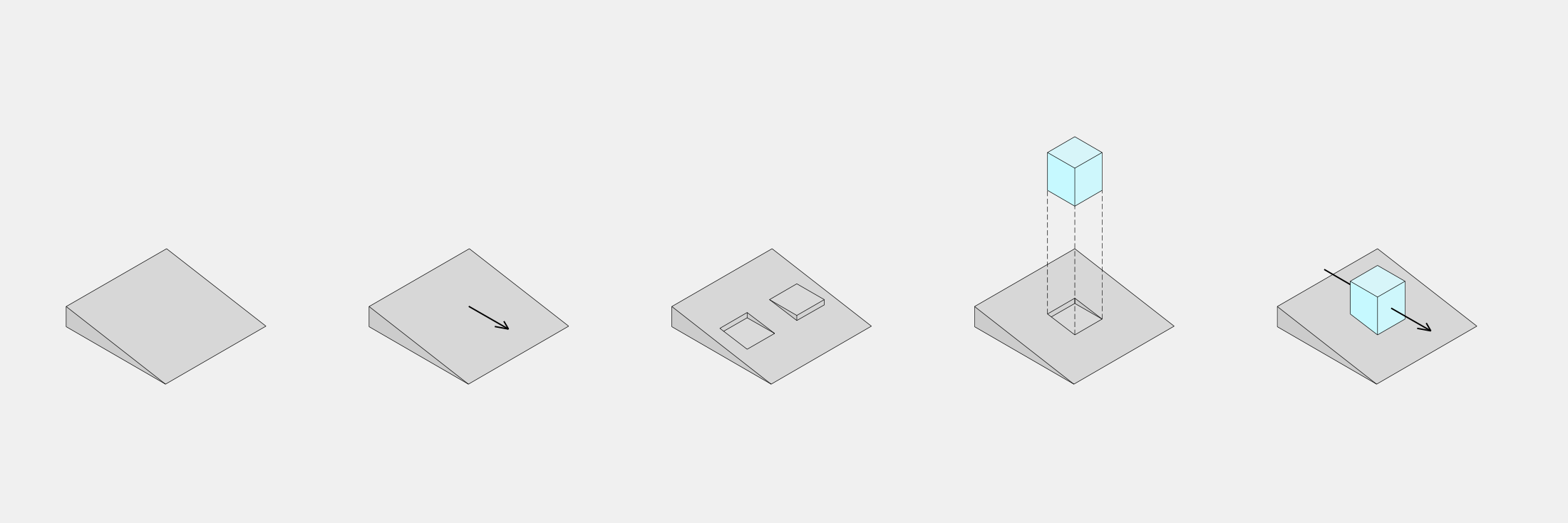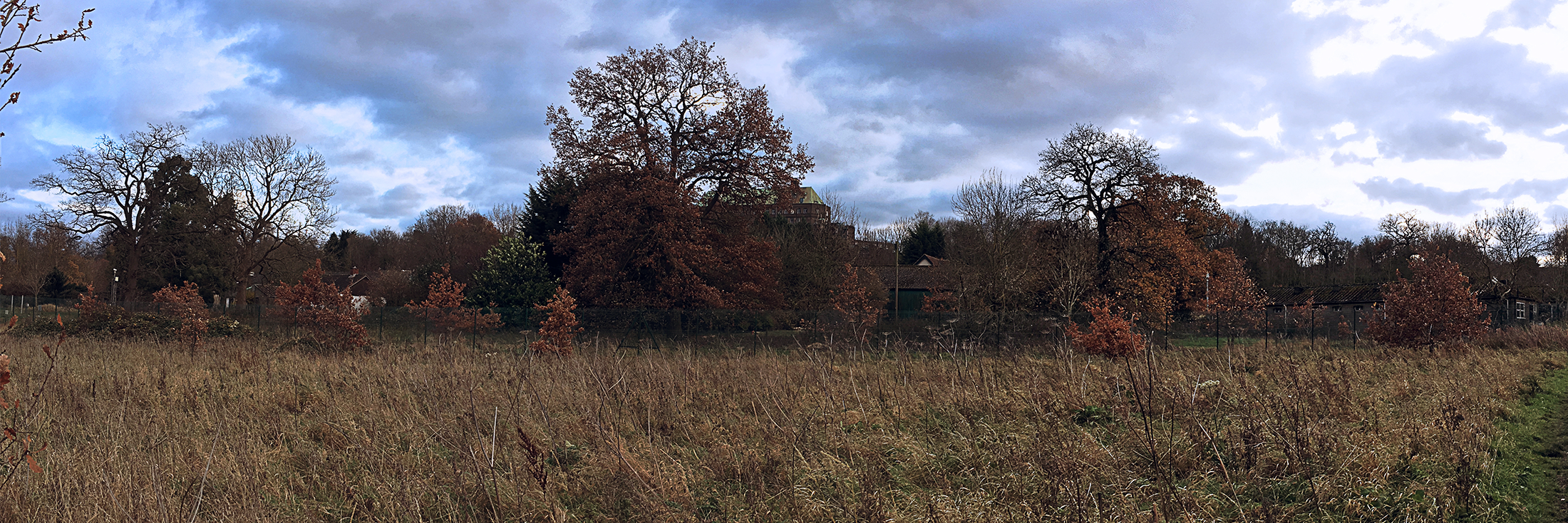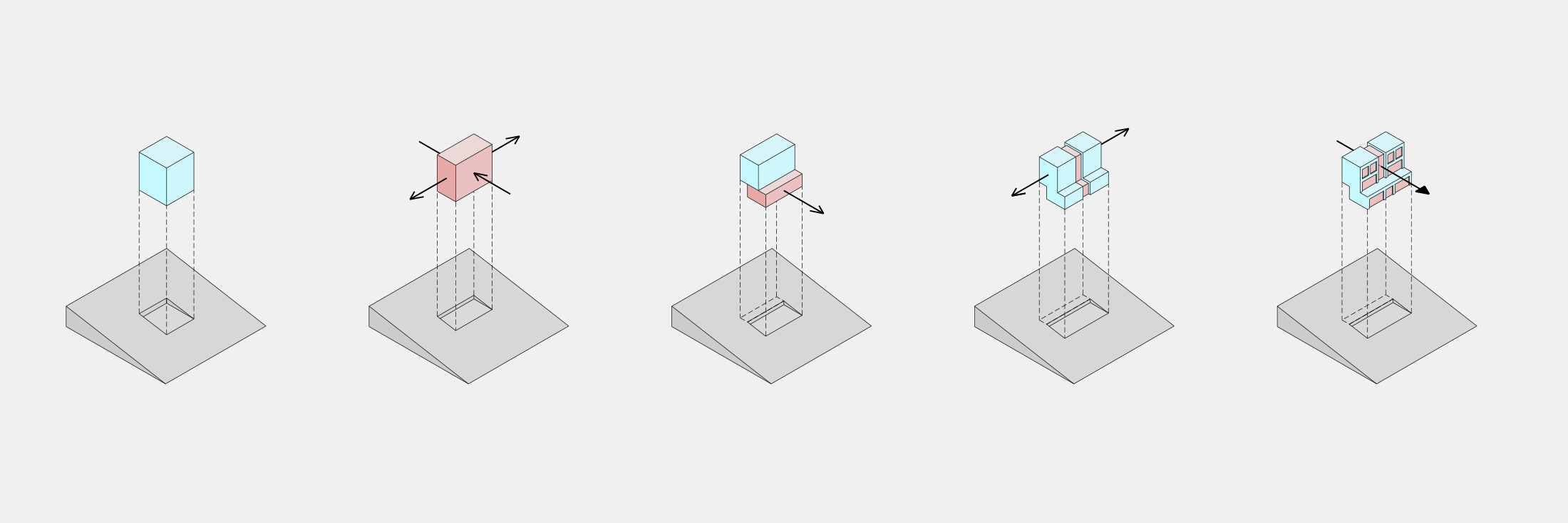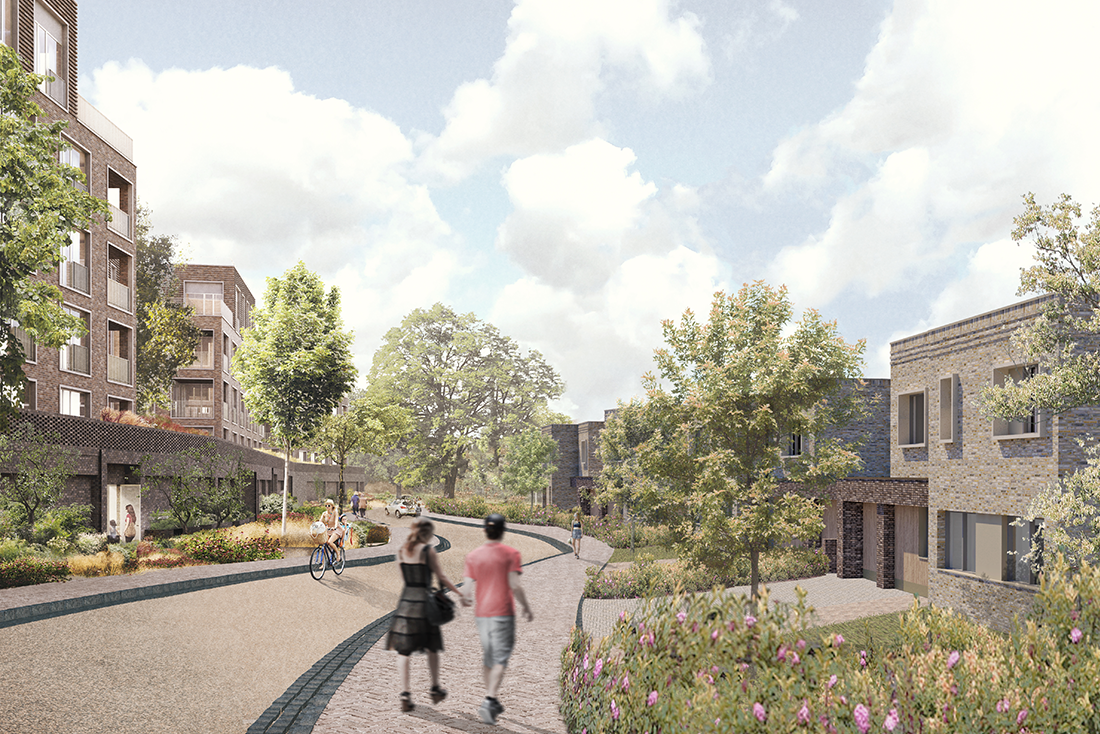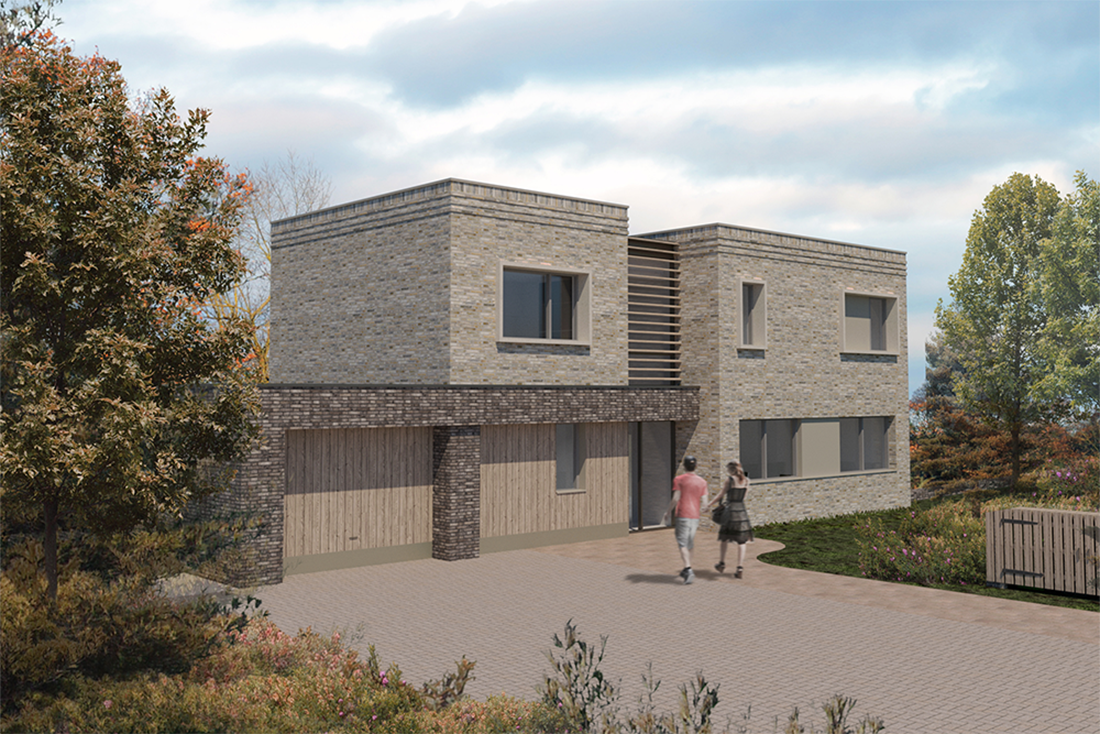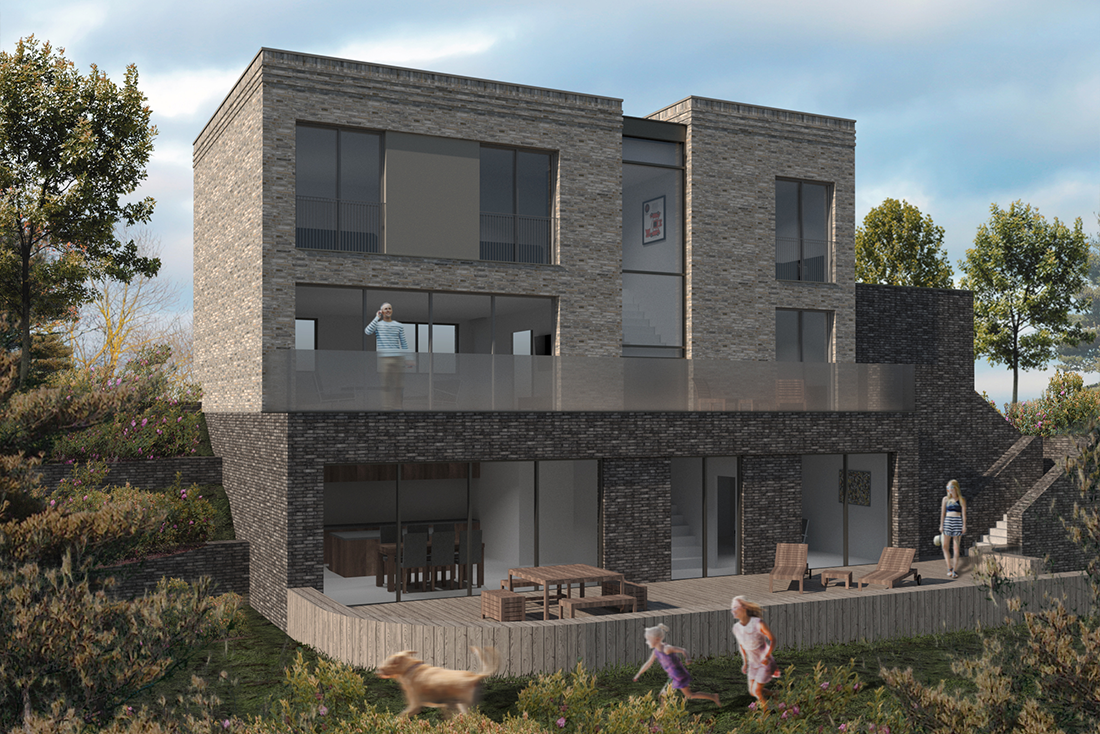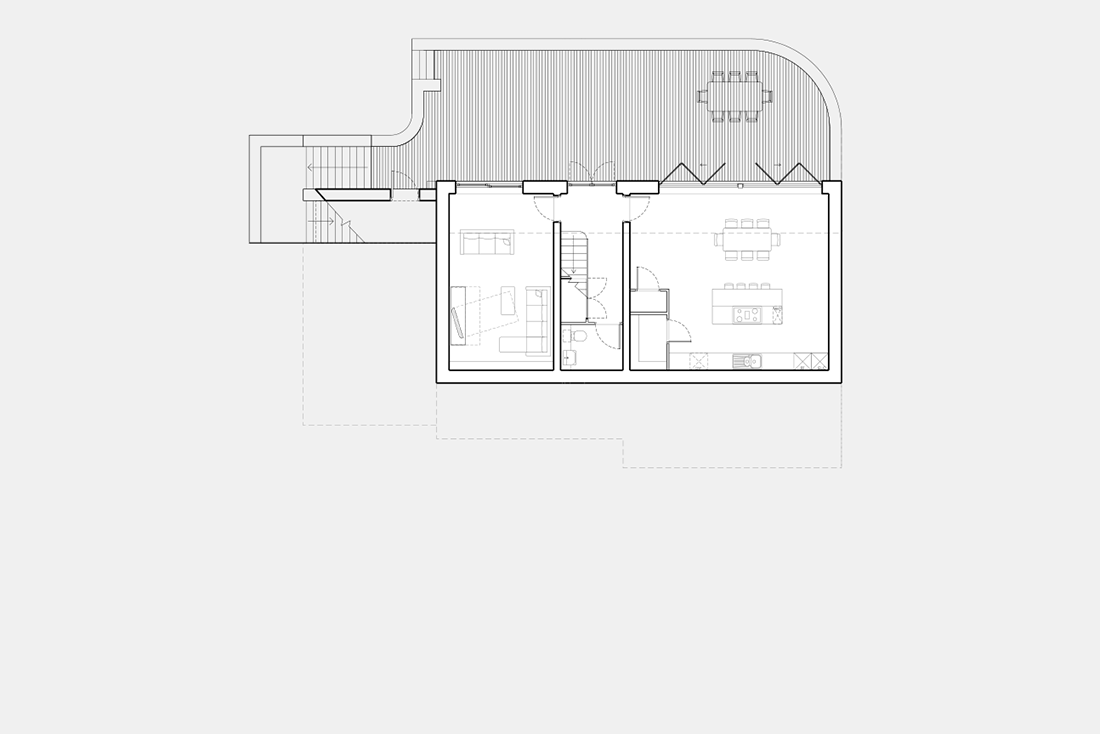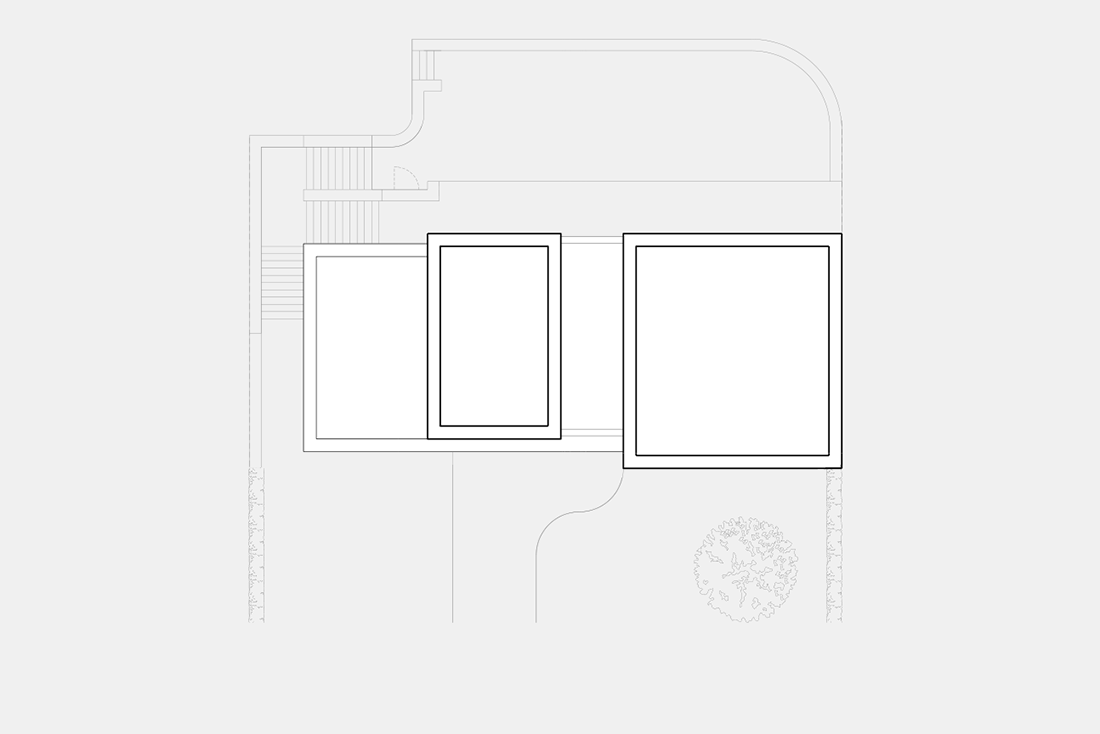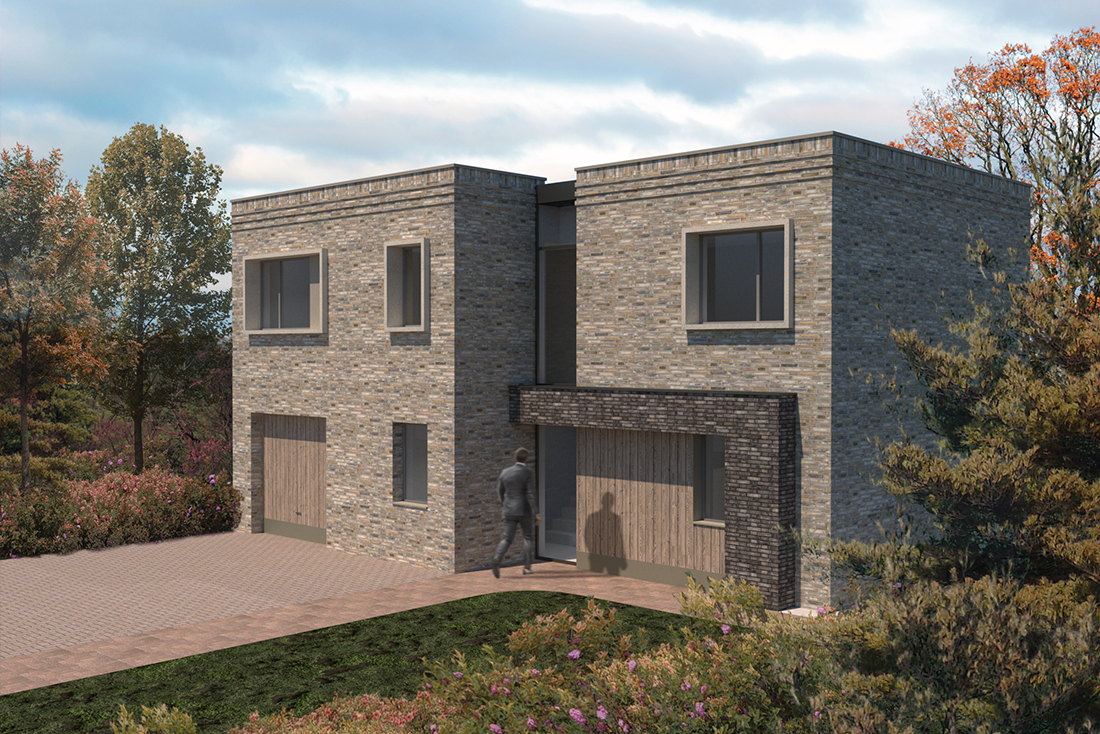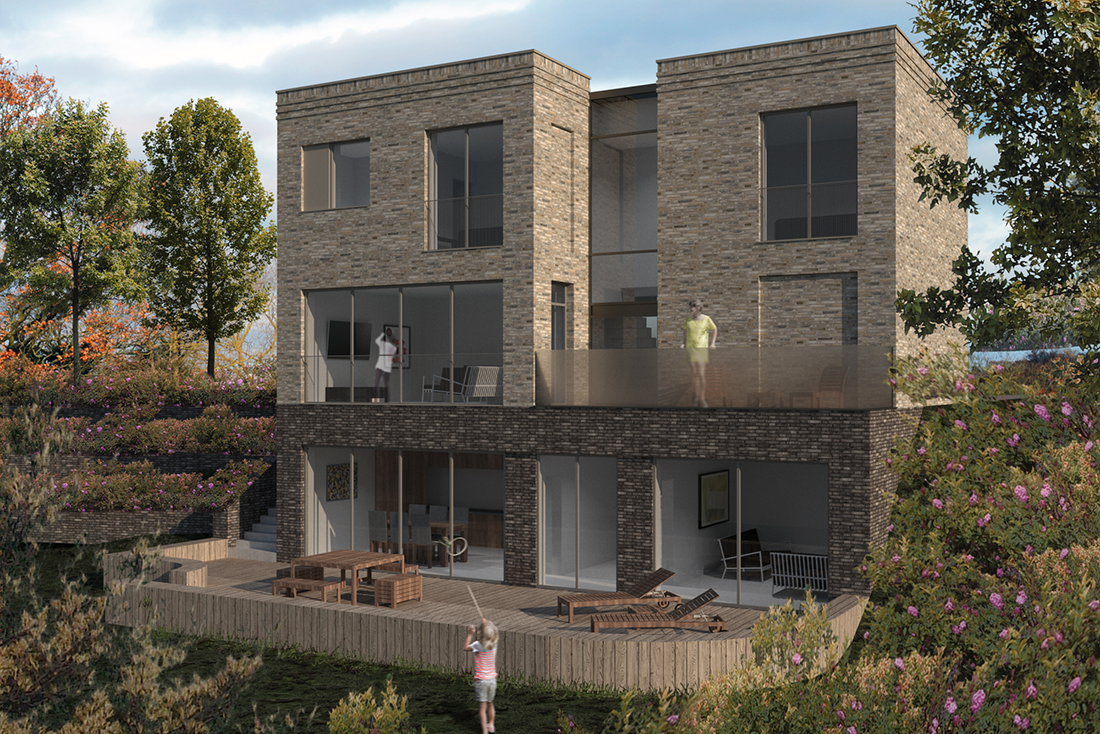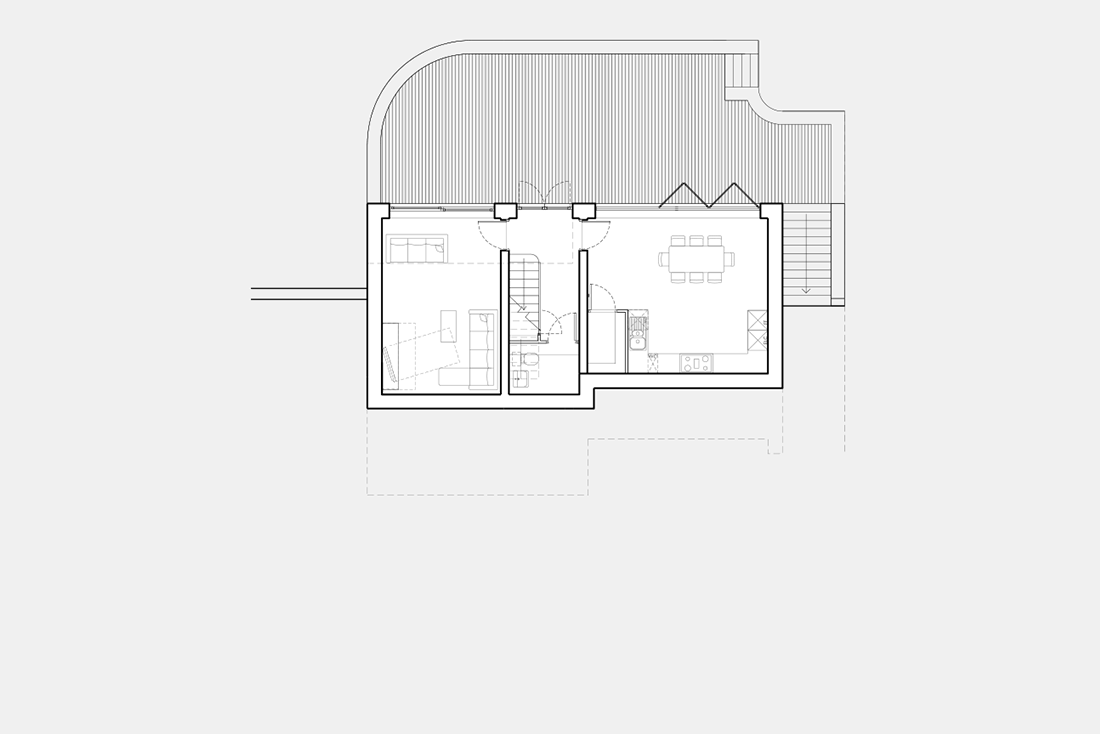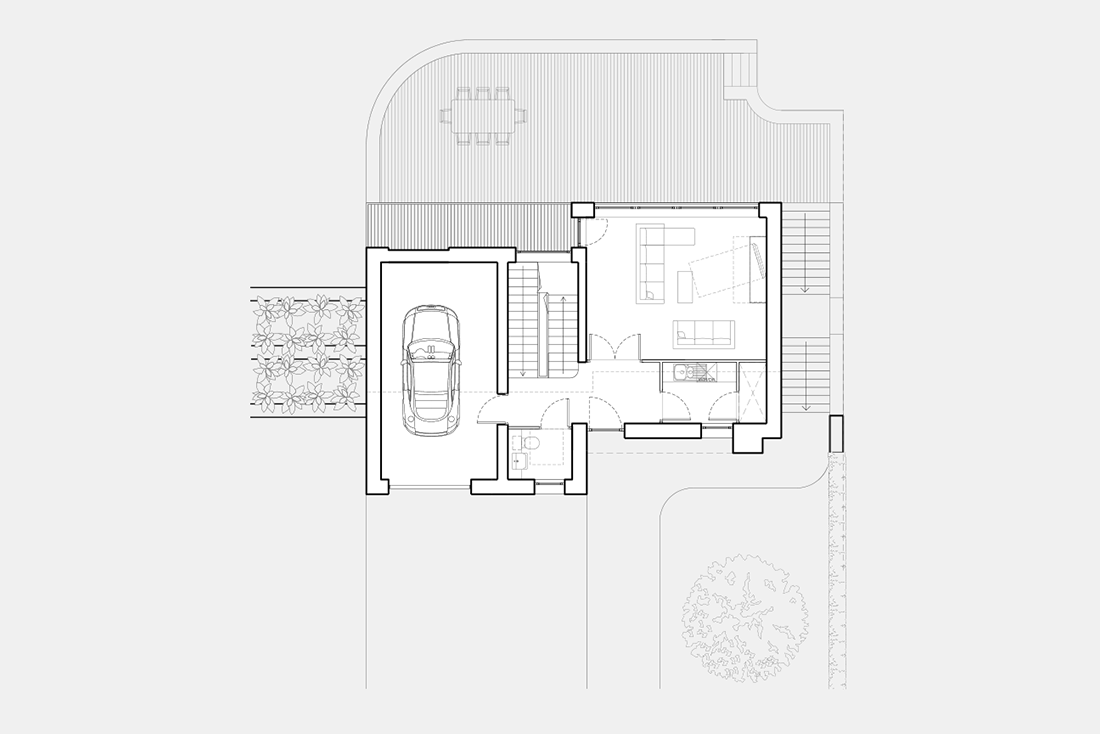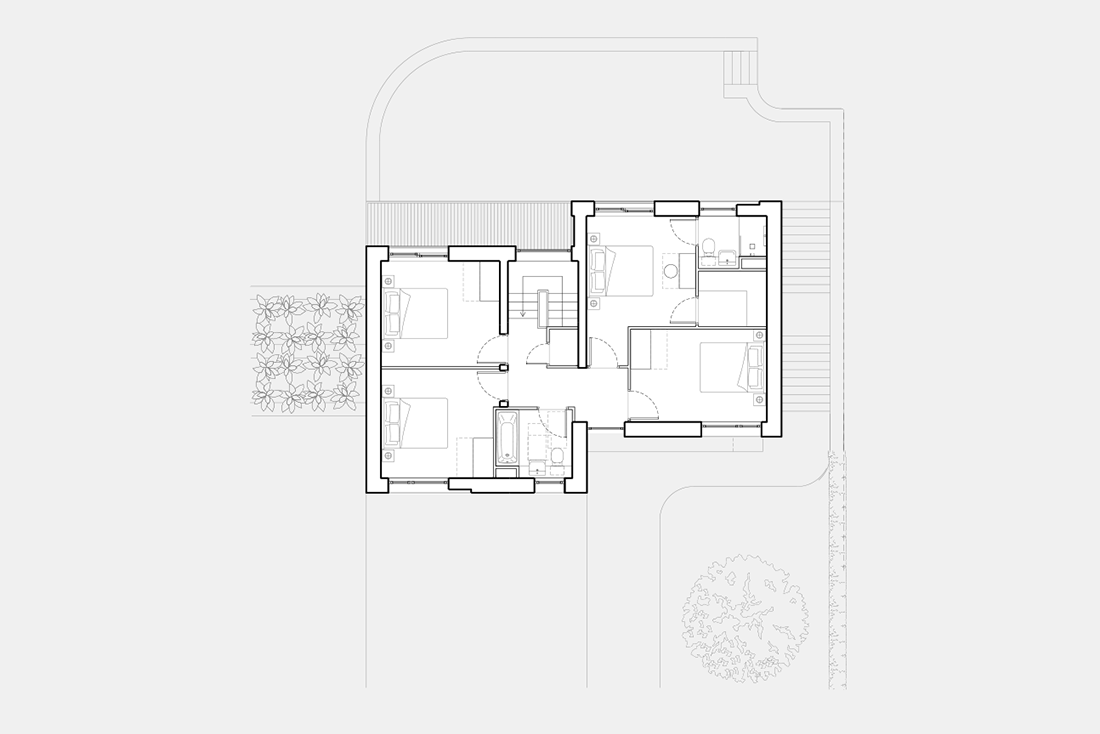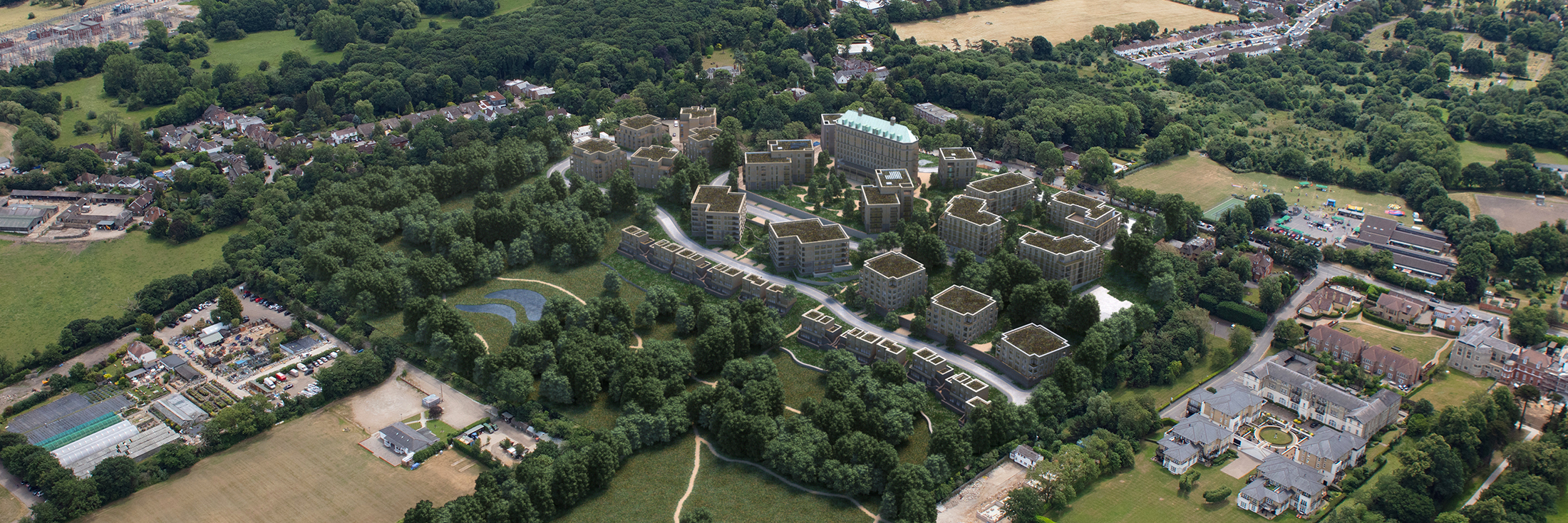NIMR: Houses
Early - Late 2018- Architecture
- Client
- Graphic Design
The National Institute for Medical Research occupied the site in Barnet, London, since the nineteen-thirties. The site was purchased and had planning permission granted for a redevelopment that provides 460 new homes by the developer. The consented scheme included a row of 12 detached houses, consisting of a mix of four and five bedroom units. The design of these units was rejected by the developer. I was appointed to redesign the dwellings to a client approved brief and undertake the project through concept and design development stages.
Analysis
The site in Barnet, London, provides scenic views north towards Totteridge Valley, a green belt area with a changing seasonal environment. The site is steeply sloping and overlooked by southern blocks of accommodation, meaning that a cut and fill approach would be an economical solution. The design is limited by the previously approved scheme and to merit planning permission must be of a similar footprint and material palette.
Proposed Design
To obtain the desired design a volume was formed according to the floor plan area required (presumption of three storeys). To maximise the views across the valley the form was initially compressed and elongated. The design was then staggered to bridge the gap between lower and upper ground floor levels. The form was then separated to accommodate a central glazed area to harmonise the design with nature. Finally the design was perforated to allow the scenic views across the valley to be maximised.
The volumes of the five bedroom house are solid, two storey blocks with a garage projects out. The blocks are separated by a visually lighter link marking the entrance and the main circulation area. The two living volumes are simple forms, connected at the centre by the point of entrance and the main circulation. The use of a visually lighter glazed connection articulates this idea clearly. The primary aspect is visible through the larger scale openings maximising views out to the landscape beyond.
The volumes of the four bedroom house are solid, two storey blocks, separated by a visually lighter link marking the entrance and the main circulation. This makes for a legible block; the point of access clear from the approach into the glazed slot between. The entrance side is more closed, reflecting the uses within; the principle habitable spaces face out across the private terraces and generous garden to the landscape beyond, reflected in the more generous windows on that side. Material palette is kept simple; two bricks interconnect to wrap up the garage and highlight the entrance. The timber is kept to a minimum; a highlight on the entrance side.
This project was completed whilst working at RMA Architects.
